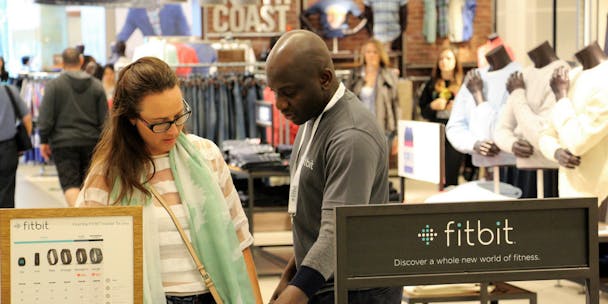The best place for the home to get smart is on the high street
It’s no surprise that the Smart Home dominated last month’s Consumer Electronics Show (CES) with a whole range of evolution and innovation across security, home appliances and energy management. The trend has no doubt been expedited by the huge success of intelligent assistants with Google announcing that their Home devices sold over 6 million units, that’s one every second, and now Google Assistant runs on over 400 third party devices globally.

Why traditional retail can be the best channel for selling technology products
Many brands, such as Samsung, have opted to support their brands by integrating their own technology. Its lesser-known Bixby Assistant was integrated into its Smart Fridge with AKG speakers, making it a multimedia centre for the kitchen. Kholer showcased its intelligent bathroom 'Konnect tech' enabling your shower, bathtub, toilet, mirror and tap to be connected, both to you and each other. The company’s Touchless Response technology provides hands-free toilet flushing, perfect for those germophobes.

The market is evolving and in 2018 it will start to get a lot more crowded as the category grows from Amazon and Google offering their own speakers in a variety of form factors but also Google, Alexa and Siri in other hardware brands like Sonos. Sonos have already released the Sonos One with Alexa, and they have hopes to integrate Siri and Google Assistant soon. Apple’s HomePod will hit homes but Siri offers some weak competition as it struggles to develop its voice recognition. Yamaha, Libratone, and DTS all announced Alexa driven smart speakers this year, with Sony, Philips and LG announcing Google Assistant integration into their smart products.
And here lies the problem. Confused already? Indeed. Understand what’s compatible with what system? Probably not. Do you know if your Ring Video Doorbell can be hooked up to your Google Home, so you can speak to any visitors without having your smart phone to hand? If you’re reading this, you probably work in marketing and are classed an early adopter. Imagine what it’s like for everyone else seeing and hearing about these products everywhere they go and no idea what to do and how to integrate them.
Smart Home retail value is expected to reach £5.11bn worldwide this year and according to the Office for National Statistics (ONS), while online sales continue to rise, e-commerce as a percentage of total retail sales in December 2017 was still only 18%. We also know that a Smart Home device in many instances requires an assisted sale. It’s a considered purchase and for some, a rather complicated buying process with further concerns about installation and integration with existing technology.
This is a great opportunity for traditional retailers to excel and showcase why they are still the best channel for selling ‘technology’ products using the retail environment to educate, engage and sell to the consumer through driving excitement and experience directly with the brand.
Our own research shows that even among today’s tech savvy 18 to 24-year-olds, more than 40% prefer to head in-store to see, touch and experience a product before buying, rising to 58% for the over 55s. Most surprising is that 38% of 18 to 24-year-olds want a personal service and recommendation from in-store staff, the highest among of all the age categories.
When we asked what advertising has influenced a considered purchase, none of the mainstream advertising channels were cited as influential: just 7.5% for TV, 8.7% for website, 4.6% for social media, 3% for billboard and 2% for newspaper and print. Advertising in-situ within the retail environment however was rated the key influencing factor at 19%.
This is a clear signal that traditional retailers should spend time and money working with staff on the shop floor and make the consumer experience as good as it can be as it will pay for itself through category development and increased sales at a higher average sales price – a win win for both retailer and brand.
Daniel Todaro is managing director at Gekko
Content by The Drum Network member:

Gekko
Gekko is a full service field marketing agency, specialised in connecting brands with consumers in retail throughout the UK and Ireland.
Gekko are experts...
